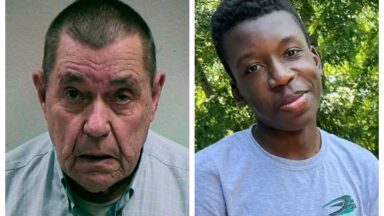Viviave Faver

The community called Tekoa Itakupe, which means Behind the Stone, is one of the villages of the Jaraguá Indigenous Land, located in the Mata Atlantica in the state of São Paulo. With 76 hectares, the village has its Opy’i (House of Prayer), community kitchen, historical remains, community garden, lake, and springs of Ribeirão Manguinho.
The chief of that village, Karai Boggarim, and his mother, Jaxuka Irene, began work to restore the Atlantic forest by planting native trees. “We need to recover these spaces as quickly as possible because the springs are dry, and the soil needs its native vegetation.” The Atlantic forest is the second most crucial biome on the planet, and only 12% remains, which is why this action is so necessary,” he highlights.
The indigenous women’s community does a lot of work for reforestation and has achieved several positive results in the recovery of the Atlantic Forest. Essential elements for the indigenous people are the preservation of stingless bees, juçara palm hearts, cedar, and especially alligator wood, white anglo, and embaúba, present both on the slopes and in the middle of the forest, which helps in the conservation of the Atlantic Forest.
THE IMPORTANCE OF BEES FOR REFORESTATION
Chief Karai Boggarim built a breeding space for species of extinct bees within the village. The main one is the arapuá bee (or irapuá), known for its black appearance and orange legs. It has become a symbol of the importance of environmental preservation.
The species is native to the Atlantic Forest, one of the most threatened biomes in Brazil. This region has already been largely devastated by human action, but conservation and restoration efforts are being carried out to reverse this situation. In this context, Arapuá bees play a crucial role as pollinators, ensuring the reproduction of several plant species.
A peculiar characteristic of the Arapuá bee is the absence of a sting, which makes it a very calm and docile species when it comes to contact with humans. This feature allows people to work together with bees to restore forests without the risk of suffering painful attacks.
In addition to its essential ecological role, the Arapuá bee has gained recognition outside the scientific world. This preservation is vital for maintaining biodiversity and the quality of life of local communities.
According to Chief Karai Boggarim, this forest is responsible for providing essential ecosystem services, such as climate regulation, water production, and the protection of springs. Therefore, the preservation and reforestation of the Atlantic Forest benefits not only the fauna and flora but also the people who depend on these natural resources. “The Arapuá bee, with its modest appearance, has become a true heroine of the reforestation of the Atlantic Forest. Their dedication as a pollinator and their role as ‘workers’ in forest restoration are inspiring examples of how small creatures can significantly impact environmental preservation.”



Recent Comments